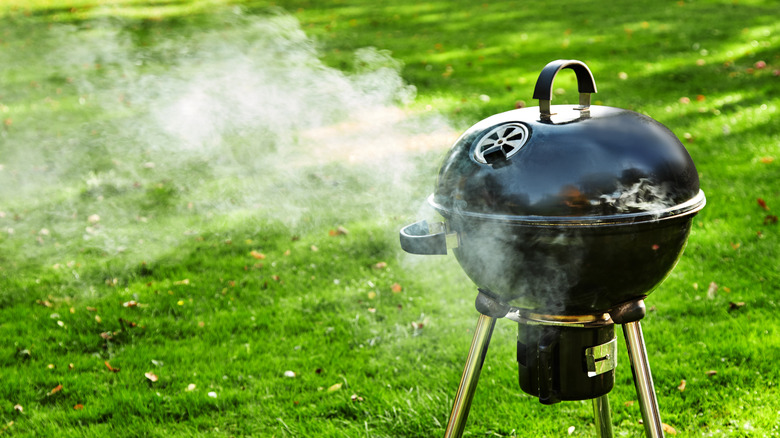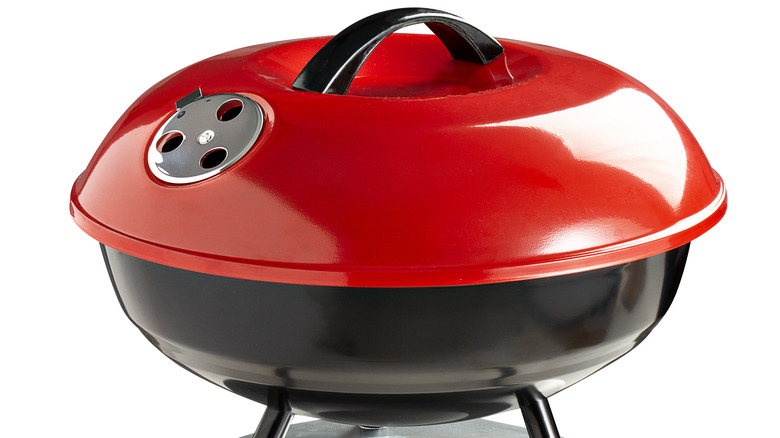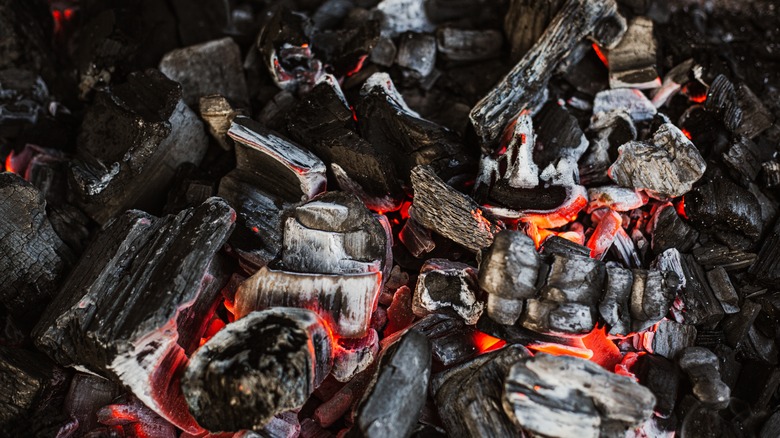When Should You Close The Vent While Grilling?
If you take a few moments to examine your charcoal grill, you may notice it's dotted with holes. With the twist of a metal slider, you can seal the perforations shut. Those are called vents, and they're actually a handy tool for cooks looking for more precise control over the temperature of their outdoor equipment.
While gas grills are easier to manipulate — twist the knob one way for a blast of heat, the other to cool things down — charcoal needs a burst of oxygen to dial up the flames. Think of opening those vents as a similar gesture to turning up your propane. As such, you should make sure your vents are wide open when you're building heat, particularly in the beginning stage of cooking when you're bringing the equipment up to temperature.
However, when you're settling in for indirect cooking, running out of fuel, or finding your grill is getting too toasty, you'll want to close more of your vents — not all — to keep the temperature from rising too high. Your fire will need some air to continue burning, so be careful not to shut off all the air holes. Only close the vents fully when you're ready to shut down the grill.
Use dampers to your advantage when grilling
The coal-powered grill has openings called dampers (or vents) on both the base and the cover. The air holes at the base have a direct line to the fuel. That means they're particularly helpful when you're working on a char or sear since the oxygen-fueled flames will encourage a fast cook. This is also handy knowledge when dealing with grilling flare-ups, as you can slow the flow of oxygen to reduce the flames.
As for the ingredients themselves, a good rule of thumb is to keep the dampers open when grilling pizza, patties, and thin veggies for a blast of heat. Carefully swivel the damper half-closed to reduce the temperature for chicken and larger vegetables and two-thirds closed for delicate fish and slower-cooking meats. Pro tip: If you're nervous about testing your heat-proof gloves, you can also toggle the dampers using the hooked end of your metal tongs.
Chefs like Bobby Flay have helpful tips for using the grill lid, but you should also consider the vents. Closing some of those air holes can help your equipment maintain a steady, oven-like environment, as well as contain fragrant wood smoke to season barbecued ribs and briskets. This tactic helps when cooking large proteins over indirect heat, as you can control the thermometer with the twist of the vent. You can also place your proteins directly underneath the partially closed top dampers to encourage heated smoke to flow through your ingredients as it exits the equipment.
When to fully close your grill's vents
In addition to managing the airflow when you're cooking dinner, make sure to pay attention to your vents when closing down your outdoor kitchen. Since oxygen fuels fire, the last thing you want is to feed your coals when you're trying to douse the flames. Instead, make sure all your vents are closed and allow the charcoal to slowly and safely snuff out.
This process is not an exact science, but you can assume the grill will remain hot for hours after you shut off the air supply. To keep your limbs safe, avoid dumping water over your briquettes, as this will cause a billow of scalding steam. Instead, when the embers are cool, you can spray them with a little water.
If you have any remaining large chunks of coal, you can set them aside for reuse alongside new briquettes after they dry — just make sure to handle them carefully and use gloves just in case they're still hot. Discard the smaller bits and pieces, though, as they can hinder the oxygen flow. And speaking of oxygen, make sure to check and clean your dampers after cooking, as a clog can make it tough to heat your grill the next time you use it.



